
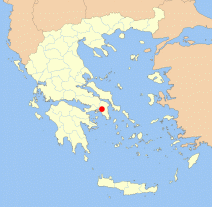 It goes without saying that you will visit it regardless of whether you like archeology or not. The New Acropolis Museum is ranking high in all listing of the best museums in the world, despite the fact that it is a thematic archaeological museum. In contrast with the other multicultural ‘stars’ as the Louvre, the Prado or the Hermitage, all exhibits in displays are from Acropolis hill, just across the road . It’s not only majestic, it’s controversial too!!!
It goes without saying that you will visit it regardless of whether you like archeology or not. The New Acropolis Museum is ranking high in all listing of the best museums in the world, despite the fact that it is a thematic archaeological museum. In contrast with the other multicultural ‘stars’ as the Louvre, the Prado or the Hermitage, all exhibits in displays are from Acropolis hill, just across the road . It’s not only majestic, it’s controversial too!!!
[sam id=”7″]
From a tourist point of view, the New Acropolis Museum (NAM) is Athens’ absolute “must see”. In fact, this is the country’s most popular site, attracting more visitors than any other museum and archaeological site in Greece! The figures for the first 3 months of 2014 are indicative: the NAM was visited by 215.548 people while the Acropolis/Parthenon by 170.100.
It’s true that a visit to the Museum seems to be the very best alternative when it’s raining and it’s too slippery to climb to the Rock or when the temperature is too high during the summer season. The views from the Museum’s terrace are stunning. The ticket costs ‘only’ 5 euros and the timetable is more flexible, as the Museum is open till late at least on Fridays (till 10 p.m.!) and on Saturdays (till 8.00 p.m.) all year round (for the full opening hours see the museum’s site)
The visit starts at the Museum’s courtyard before the entrance to the building and the ticket hall. What we see on the building’s foundations are the remains of a neighborhood of Ancient Athens, inhabited from the 5th c B.C. To 9th c. A.D.! Streets, baths, workshops, towers, cisterns and wells (full of coins) will be accessible in a few months when the restoration will be finished.
In fact these remains are one of the (many) reasons that explain the inauguration delay of this Pharaonic work. Just think that the decision to build a new Museum was first taken in 1976 when they realized that the 19th museum built on the Rock was inadequate to host the multitude of the exhibits, some of them belonging to the world cultural patrimony like the Caryatids. The lack of space for the current exhibits was not the only motivation. The Greek government needed a new ‘appropriate’ museum in order to claim the Parthenon frieze stolen or ‘removed ‘ from lord Elgin (known as Elgin marbles), now host in the British Museum. Therefore the construction of a new museum was a political act too
The New Museum, work of the Swiss-born American architect Bernard Tschumi, was supposed to be ready for the 2004 Olympic Games. It was inaugurated five years later, in 2009. I remember how shocked people were when the Museum was first opened to the public. The Athenians couldn’t decide it they hated it or loved it. Not only it was completely (and conventionally) modern, built with glass and concrete, it was enormous too. The old museum had an area of only1.450 sq.m. while the new has an exhibition space of 14.000 m. space (total area of 25.000 sq.m.!).
Even now when I see it from above, from the Parthenon, I still think that its scale is disproportionately large compared to the monument.Sometimes I have the impression that it looks like a Mall! On the other hand, when I am inside, it’s hard not to be impressed by the grandeur of the building, apart the beauty of the exhibits. It’s not easy to decide…
Note that it is prohibited to take the photos in the archaic hall. You can ‘bring’ with you only the Kore or Caryatids and of course the Parthenon Frieze on display on the top floor.
According to the Museum’s brochure (and the architect’s intentions) the lead in to the exhibition simulates and symbolically reproduces the ascent to the Sacred Rock. I can’t say anything about the symbolic position of the terrace outside the cafe/restaurant apart that it is impressively spacious and gives excellent views of the monument.
If you can choose the time of your visit, it’s better to go in the evening when it is getting dark outside. The reason is that the natural light (highly praised by the Museum’s fans) can create problem if you want to see carefully the sculptures’ details.
[sam id=”7″]

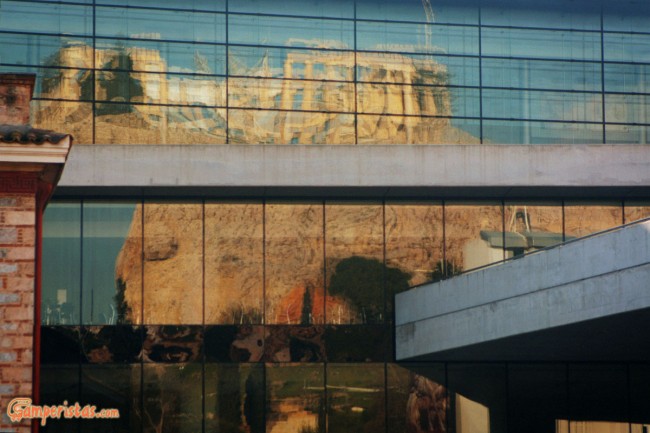
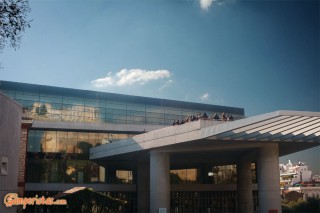
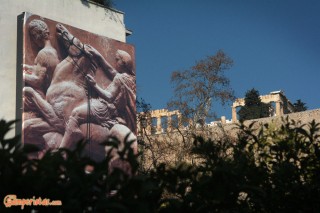
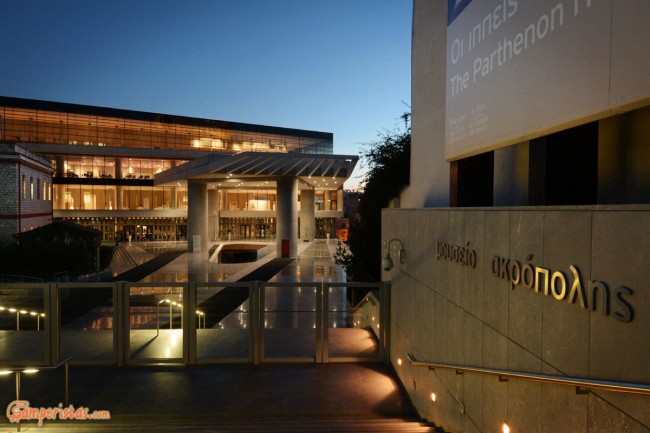
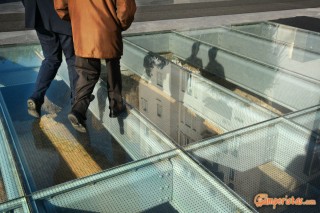
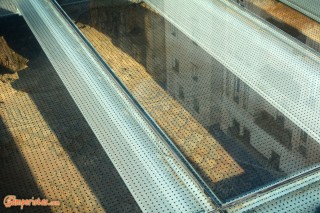
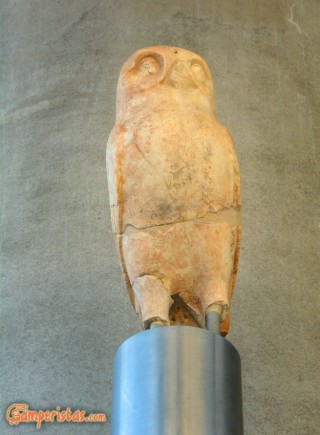
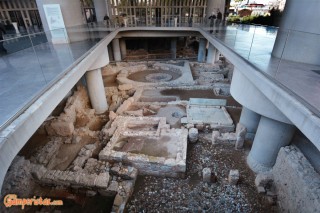
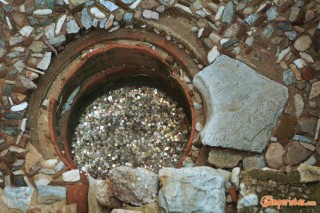
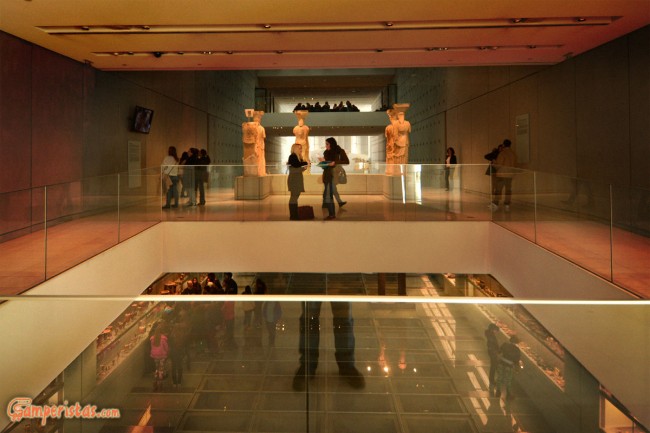
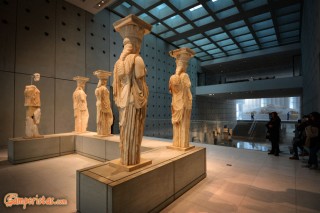
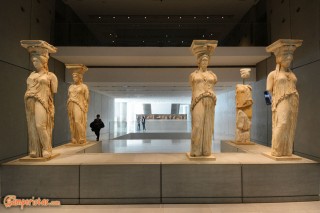
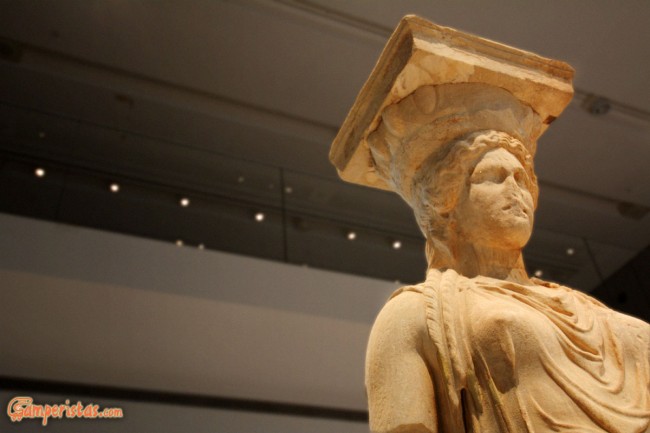
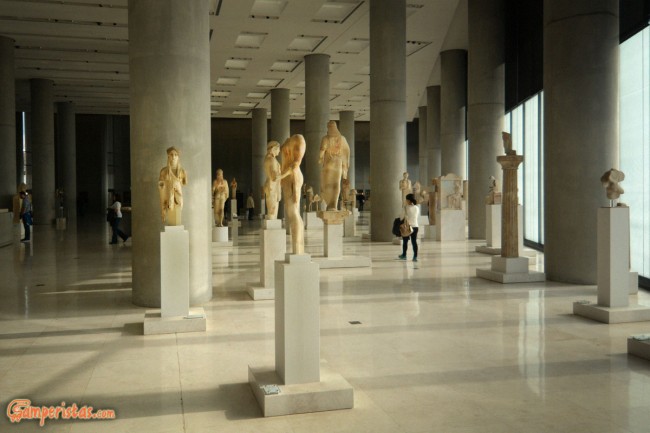
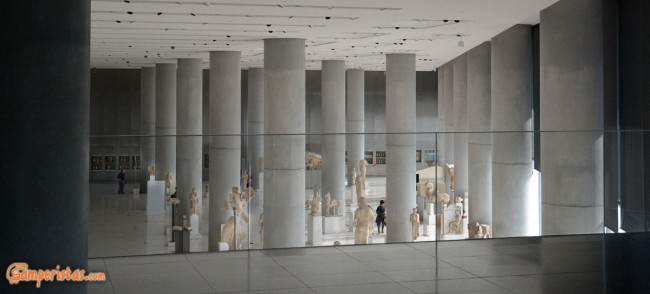
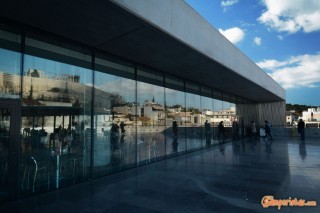
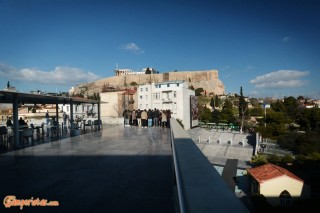
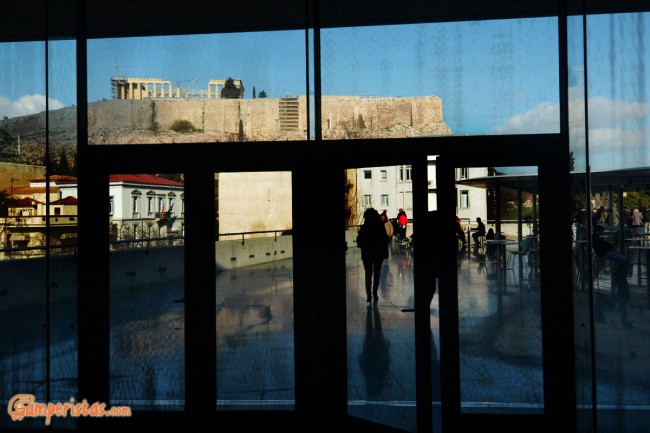
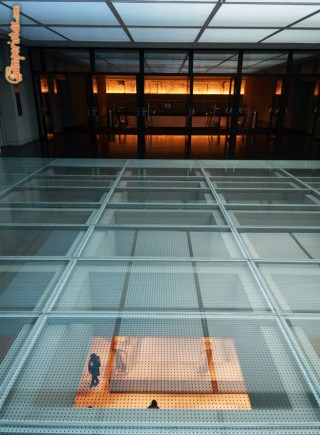
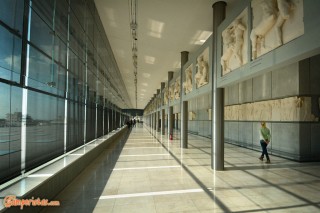
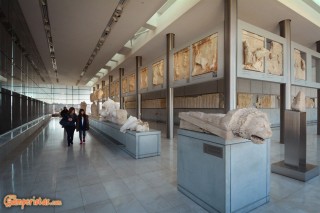
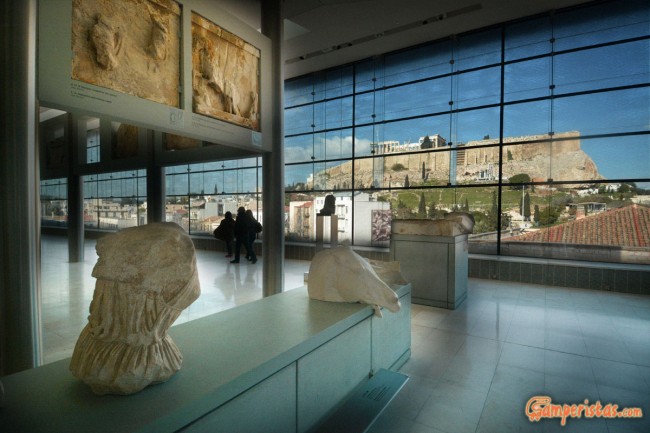
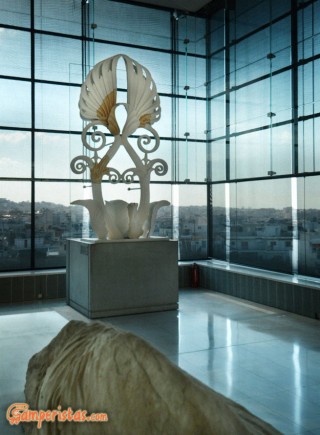
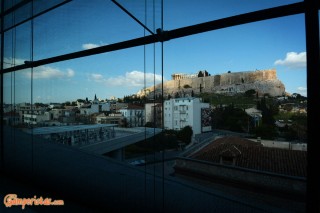
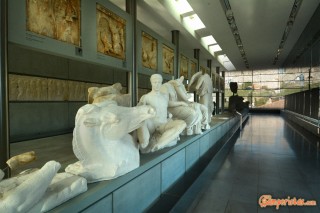
I’ve been to Greece several times, but your site has some of the best photos and commentary I’ve seen on the internet; very well chosen photos.
Thank you Ed ! 🙂
Pingback: The Athens Digest #1 | Aspects of Athens